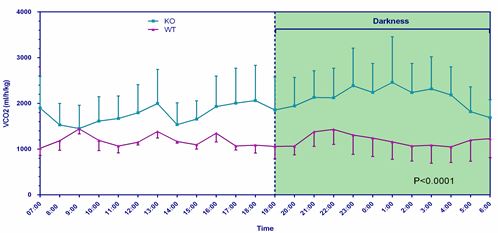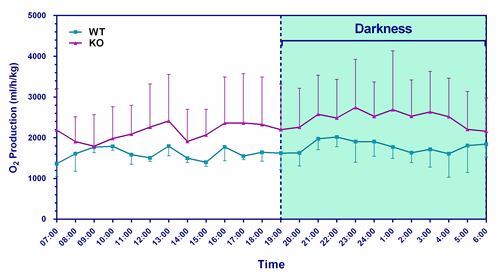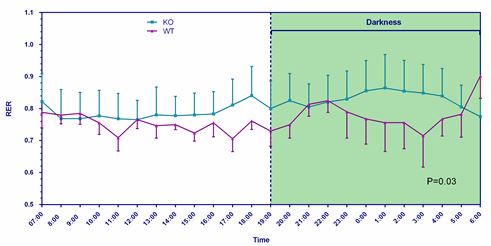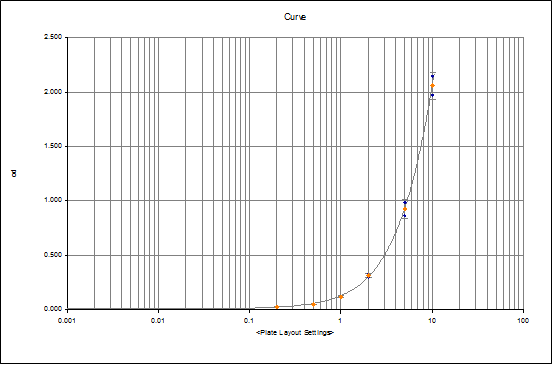Metabolic Analysis
Service description: 24-hour circadian rhythm and metabolism tracking and observation in mice
Service content: Monitor the 24-hour activity of mice and analyze the change in the circadian rhythm of mice. Collect the data of food consumption, O2 consumption and CO2 exhaust to derive the respiratory entropy and analyze the metabolic state of mice.
Service advantage: Using the ColumbusOxymax/CLAMS metabolic analysis system produced in the U.S., the collection of experimental data is accurate and sensitive
Notice to customers: In order to reduce the stress effect caused by environmental changes, a one-week adaptation period is required for experimental mice. Because of individual differences in mice and the sensitive nature of the detection, there may be large intra-group differences, thus leading to meaningless results of statistical analysis among different groups. In this case, a larger number of samples are required to overcome the standard deviation.

Figure 1. Carbon dioxide production in mice (unit: [ml/h/kg])

Figure 2. Oxygen production in mice (unit: [ml/h/kg])

Figure 3. Respiratory exchange ratio (RER) of mice
Principle: Enzyme-linked immunosorbent assay (ELISA) is a novel immunoassay technology. The procedure of ELISA includes the coating of an antigen (antibody) onto a solid phase carrier, the addition of the test antibody (antigen), the addition of a corresponding enzyme-labeled antibody (antigen) to generate the complex of antigen (antibody)-test antibody (antigen)-enzyme-labeled antibody. The complex is then reacted with the substrate of the enzyme to generate a colored product, which is then measured by a spectrophotometer to determine the amount of the test antibody (antigen).
Service cycle: 3 business days
Sample requirements: Serum/plasma
Notice to customers: Do not freeze and thaw the sample repeatedly to avoid hemolysis. For each test, all samples are measured in replicate by default except for special requirements.


Figure 4. Standard curve of insulin ELISA
Principle: After fasting for 6 hours, the mice are injected intraperitoneally with an insulin solution, and their blood glucose levels are measured at 0 min, 15 min, 30 min, 60 min, and 120 min. The utilization rate of insulin in mice is determined by calculating the area under the curve (AUC) to confirm the degree of insulin resistance.
Sample requirements: Adult mice
Service cycle: 1 business day (2 weeks if blood collection is required)
Principle: After fasting for 16 hours, the mice are injected intraperitoneally with a glucose solution, and their blood glucose levels are measured at 0 min, 15 min, 30 min, 60 min, and 120 min. The area under the curve (AUC) of the mice is calculated to determine the functions of their islet β-cells and the regulation of blood glucose in their body, and subsequently determine the severity of diabetes.
Sample requirements: Adult mice
Service cycle: 1 business day (2 weeks if blood collection is required)
Popular articles
SMOC’s Annual Progress and Advances in Preclinical immuno-Oncology Research: The workshop is designed as a forum for ideas and opinions exchange on how to decrease the rate of clinical failures in oncology and immuno-oncology.
Learn moreAfter the base is put into operation, SMOC’s capability to provide genetically modified rat/mouse models and technical services including gene function research and drug development will be greatly enhanced.
Learn more

